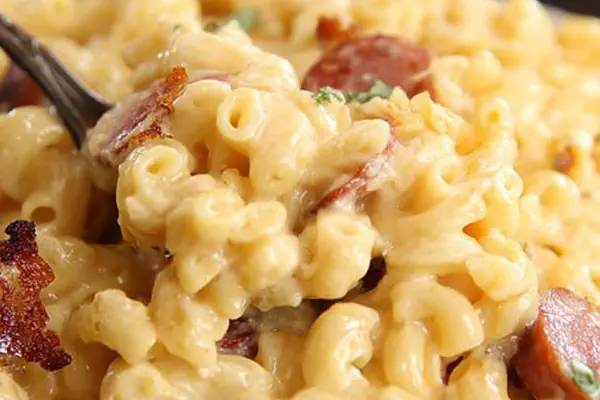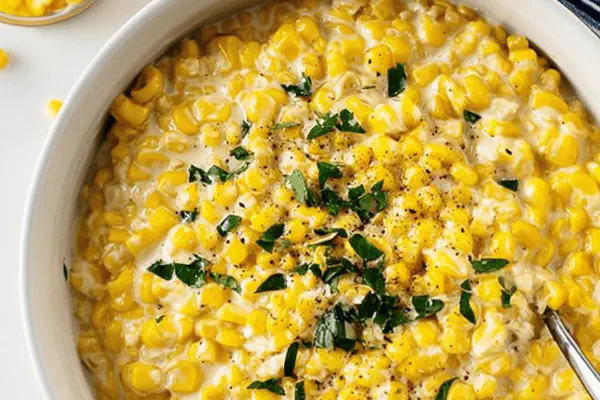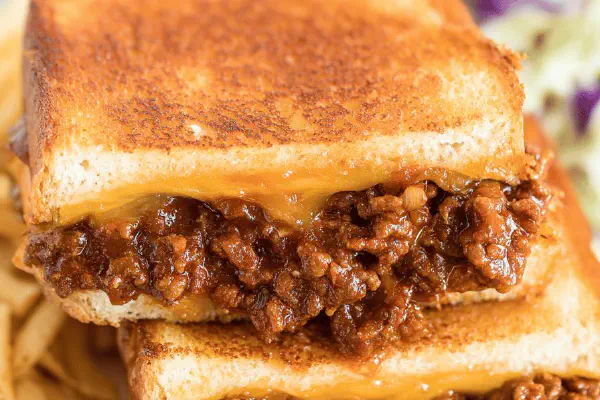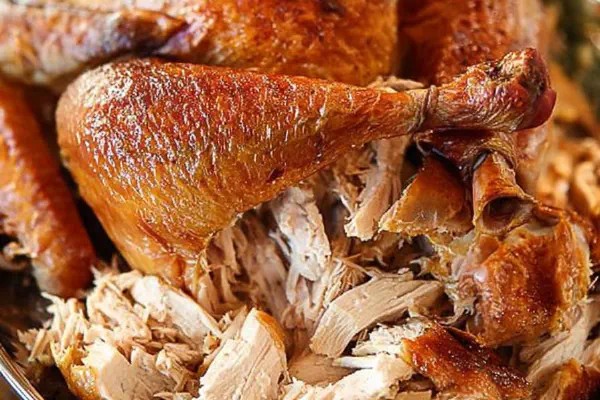Creamy Smoked Sausage Mac

By Emma
Certified Culinary Professional
Ingredients
- 1 lb smoked sausage, sliced thin
- 3 cups elbow macaroni
- 4 cups whole milk, warmed
- 3 tbsp unsalted butter
- 3 tbsp all-purpose flour
- 3 1/2 cups shredded cheddar cheese (swap 1 cup for pepper jack for twist)
- 1 tsp kosher salt
- Fresh cracked black pepper, to taste
About the ingredients
Method
- Start tossing sliced sausage in a hot skillet; medium heat. Watch edges sizzle, brown patches should form, not gray mush. Flip swiftly, about 5 minutes. Remove and drain on paper towels. Sausage fat left behind—don’t wipe. Keep pan for roux.
- Grate all cheese by hand on box grater; none of that pre-shredded garbage. Avoid texture issues in melting. Keep cheese nearby first ready to go after roux done.
- Boil macaroni in salted water according to box but stop just shy of firm bite—al dente with tooth resistance. Drain and toss pasta in a little butter if you want, keep warm momentarily.
- Pour milk in microwave-safe container. Heat at medium-high until warm but not boiling, roughly 3 minutes depending on your appliance. Should steam lightly with warm aroma, not scalded edges—trust your nose.
- In skillet with sausage fat on medium-low, add butter if pan seems dry. Melt till foam sinks in. Whisk in flour immediately. Stir constantly for 1 minute—no browning, just raw flour cooked taste gone.
- Gradually pour warm milk while whisking. Watch sauce thicken over 5-6 minutes. Small bubbles appear at edge, not vigorous boil—key to not scorch. Sauce should coat spoon thick but still pourable.
- Lower heat. Add cheese handful by handful. Stir constantly until all melted. Should be velvety. Season with salt cautiously; cheese already salty. Adjust pepper vigorously after tasting.
- Dump pasta and sausage back into sauce in skillet. Fold gently till all coated with no dry pockets. Taste for seasoning again; adjust with more salt and pepper as you see fit.
- Serve piping hot immediately. Top with more cheese or parsley if desired. Leftovers deserve a splash of milk when reheated to rescue sauce consistency.
Cooking tips
Chef's notes
- 💡 Brown sausage on medium heat. Listen for sizzle edges crisping; brown patches, no gray mush. Flip fast before burnt inside. Drain on towels but keep fat in pan. Fat builds flavor base. Use same skillet for roux—never wipe pan dry.
- 💡 Grate cheese fresh on box grater. Pre-shredded has anti-clumping additives; kills creaminess. Texture difference huge. Keep cheese close. Add handfuls slow when sauce ready. Melt low heat; stir constant. Avoid grainy, greasy mess.
- 💡 Cook pasta just shy al dente. Test bite, slight firmness remains. Overflow risk if too soft—sauce absorbs excess water, turns watery. Drain, toss with small butter pat to prevent sticking. Keep warm but dry—moisture kills sauce cling.
- 💡 Warm milk medium-high in microwave 3 min. Must steam lightly, no boil or scald edges. Hot milk prevents lumps when added to roux; cold shocks sauce, clumps form. Watch aroma for readiness; warm smell, no burnt note.
- 💡 Make roux in sausage fat and butter. Butter foam sinks; add flour quick. Stir for 1 min; no browning, just raw taste gone. Raw flour thickens improperly. Constant stirring key. Too long - brown roux changes flavor, avoid here.
- 💡 Add warm milk gradually, whisk nonstop. Look for small bubbles at sauce edge—not full boil. Sauce thickens slow, coats spoon thick but pourable. Rush here, scorch bottom or lumps form. Patience shapes creamy texture.
- 💡 Salt cheese salty enough. Add cautious salt after cheese melts; adjust pepper vigorously. Pepper late helps brightness. Too much salt early throws off balance; cheese carries sodium. Black pepper fresh cracked, not preground dull.
- 💡 Fold sausage and pasta gently in sauce. Toss without crushing pasta. Even coat skips dry spots. Soggy pasta problem if over-mixed. Sauce thickens on standing; reheat left overs with splash milk, stir to rescue texture.
- 💡 Leftovers reheat well with extra milk splash. Stir slowly on low heat. Avoid microwave dry heat or boiling—cheese separates fast. Splash milk loosens thick sauce, brings back creamy coating. Keeps it close to fresh texture.
Common questions
Why brown sausage first?
Browning creates Maillard crust, flavor base. Fat renders out, stays in pan, important for roux. Skipping browning wilts flavor, makes sauce greasy or bland. Crisp edges, not mushy. Medium heat, patient flips needed.
Can I use pre-shredded cheese?
Pre-shredded has anti-caking agents, stops melt smoothness. Sauce turns grainy or clumpy. Fresh grating worth time; texture night and day. If no box grater, shred block fine to avoid mess.
What if sauce lumps?
Most common cause cold milk added too fast, or roux too hot. Best fix: whisk warm milk very slowly. Stir constantly. If lumps formed, strain or reheat with whisking. Patience key; no skipping steps to get creamy.
How store leftovers?
Refrigerate in airtight container, 3-4 days max. Reheat low heat stove with splash milk or in microwave paused stirring to avoid dry edges. Can freeze but sauce might separate — re-whisk milk while warming.



